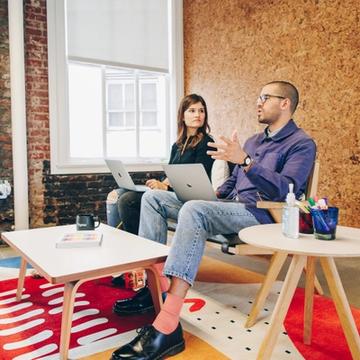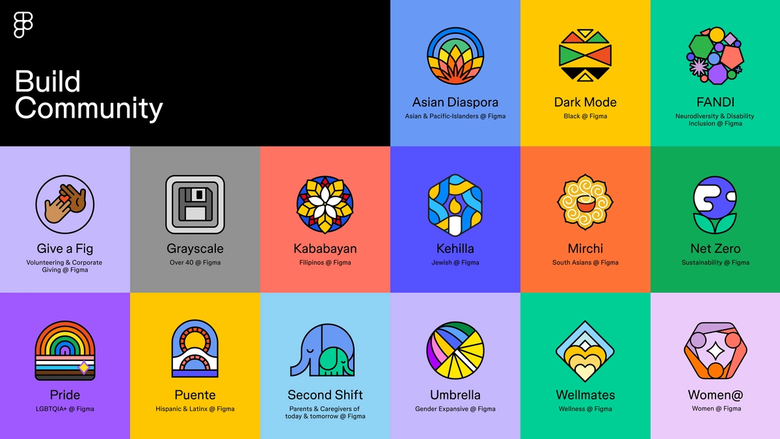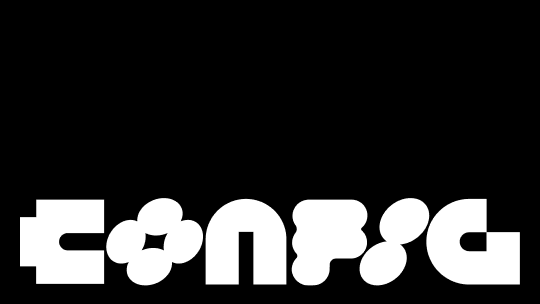Careers at Figma
Figma is a design platform for teams who build products together. Our vision is to make design accessible to all because we know that nothing great is made alone.
We’re a team of makers who celebrate our differences and share a passion for our community. We’re hiring across our global hubs and remotely in the US and Canada.
Come join us!

Our Values and Culture
Our values and culture are the underpinning for all that we do at Figma—we believe that a great product is inextricably linked to a great internal community.

Build community
We’re multiplayer people who love the weird, wonderful magic that happens when people connect. We build bridges—with both our Figmates and our users.

Run with it
Building Figma is about taking initiative, being bold and charting a new course, not running a playbook. Figmates are building the future of design by tackling big, scary, exciting challenges like Figma’s future depends on it. Because it does.

Love your craft
We build for builders and try to make complex things feel simple. We ask why until we get to the core and continually focus on solving the right problem, not just shipping work.

Grow as you go
With humility and curiosity, we give and get the direct feedback we all need to become great. Everyone’s a work in progress, and we’re here to help each other grow.

Play
Playing is learning. We embrace spontaneous, unstructured exploration—because that’s where we find our best ideas.
Life at Figma
Connection and kindness are core to our culture (after all, we’re a group of people building a collaboration tool). We focus on lifting each other up instead of competing amongst ourselves, and we build relationships through numerous company traditions.

Figmate Community Groups
Our Figmate Communities are an essential part of our value of “Build Community." These groups form through shared identities, experiences, and passions, and they help all Figmates feel like they belong. We aim to center the voices of our Figmates and connect to each other through storytelling, collective impact projects, fireside chats, intersectional programming, educational trainings, and monthly meetups.

Maker Week
A time set aside once a year to pursue wild, silly, and imaginative ideas. The whole company takes part, and people can work on anything Figma-related that piques their curiosity.

Benefits
Competitive salary & equity
Health, Dental, & Vision
Retirement with company contribution
Parental leave & fertility support
Mental health and wellness benefits
Generous PTO
Company recharge days
Learning & development stipend
Work from home stipend
Cell phone reimbursement
Locations
San Francisco
New York City
Seattle
London
Paris
Berlin
Tokyo
Singapore
Job Openings
Business Operations
Design
- Director, Product Design
- Manager, Scaled Insights
- Product Designer, Developer Tools
- Product Designer, FigJam
- Product Designer, Growth
- Researcher, Developer Tools
- Researcher, Product Strategy
- Research Operations & Enablement Manager
- UX Writer, Developer Tools
- UX Writer, Developer Tools (London, United Kingdom)
Early Career
Engineering
- AI Applied Scientist
- Data Engineer
- Data Scientist, Finance or Marketing
- Data Scientist, Platform
- Director, Software Engineering - Data Infrastructure
- Manager, Data Science - Sales
- Manager, Software Engineering - AI Product
- Manager, Software Engineering - Deploys
- Manager, Software Engineering - Scenegraph & Sync
- Manager, Software Engineering - Search Platform
- ML Engineer - AI Platform
- Security Engineer
- Software Engineer - AI Product
- Software Engineer - Application Platform
- Software Engineer - Billing
- Software Engineer - Client Platform
- Software Engineer - Creation Engine
- Software Engineer - Data Infrastructure
- Software Engineer - Design Tools
- Software Engineer - Developer Experience
- Software Engineer - Distributed Storage
- Software Engineer - Enterprise
- Software Engineer - Extensibility
- Software Engineer - FigFile Platform
- Software Engineer - LiveGraph
- Software Engineer (London, United Kingdom)
- Software Engineer - Mobile Platform
- Software Engineer - New Initiatives
- Software Engineer - Product Foundations
- Software Engineer - Production Engineering
- Software Engineer - Rendering and Animation
- Software Engineer - Revenue Growth
- Software Engineer - Search Platform
- Software Engineer - Server Platform
- Software Engineer - Traffic
- Software Engineer - User Growth
- Technical Program Manager - AI
Marketing
- Communications Manager (Singapore or Tokyo, Japan)
- Growth Marketing Manager, SEO
- Manager, Advocacy (London, United Kingdom)
- Manager, Figma for Education - International (London, United Kingdom)
- Paid Marketing Manager
- Product Marketing Manager, Design
- SEO & Digital Content Manager (Singapore)
- Web Developer
People
Product
Product Support
Sales
- Account Executive, Enterprise
- Account Executive, Enterprise (London, United Kingdom)
- Account Executive, Enterprise (Paris, France)
- Account Executive, Enterprise, Portuguese Speaking (São Paulo, Brazil)
- Account Executive, Enterprise, Spanish Speaking (São Paulo, Brazil)
- Account Executive, Enterprise (Sydney, Australia)
- Account Executive, Enterprise (Tokyo, Japan)
- Account Executive, Federal
- Account Executive, Mid-Market
- Account Executive, Mid-Market (Berlin, Germany)
- Account Executive, Mid-Market (London, United Kingdom)
- Account Executive, Mid Market, Portuguese Speaking (São Paulo, Brazil)
- Account Executive, Mid-Market (Sydney, Australia)
- Account Executive, SMB
- Account Executive, SMB (Berlin, Germany)
- Account Executive, SMB (London, United Kingdom)
- Account Executive, SMB, Portuguese Speaking (São Paulo, Brazil)
- Account Executive, Strategic, Korean Speaking (Singapore)
- Account Executive, Strategic (London, United Kingdom)
- Account Executive, Strategic, Spanish Speaking (Paris, France)
- Commercial Solutions Consultant (Paris, France)
- Director, Sales Development
- Director, Solutions Consulting
- Enterprise Solutions Consultant
- Enterprise Solutions Consultant (São Paulo, Brazil)
- Enterprise Solutions Consultant (Sydney, Australia)
- Inbound Sales Development Representative (London, United Kingdom)
- Inbound Sales Development Representative (Singapore)
- Manager, Enterprise Sales
- Manager, Mid-Market Sales
- Manager, Mid-Market Sales (Berlin, Germany)
- Manager, SMB Sales (London, United Kingdom)
- Onboarding Manager, Customer Experience (São Paulo, Brazil)
- Onboarding Manager, Customer Experience (Singapore)
- Outbound Sales Development Representative
- Outbound Sales Development Representative (London, United Kingdom)
- Outbound Sales Development Representative (Singapore)
- Sales Enablement Manager (Singapore)
- Sales Enablement Manager (Tokyo, Japan)
At Figma we celebrate and support our differences. We know employing a team rich in diverse thoughts, experiences, and opinions allows our employees, our product and our community to flourish. Figma is an equal opportunity workplace. We are dedicated to equal employment opportunities regardless of race, color, ancestry, religion, sex, national origin, sexual orientation, age, citizenship, marital status, disability, gender identity/expression, or veteran status.

About Figma
Figma is the design platform for teams who build products together. Born on the Web, Figma helps teams brainstorm, design and build better products — from start to finish. Whether it’s consolidating tools, simplifying workflows, or collaborating across teams and time zones, Figma makes the design process faster, more efficient, and fun while keeping everyone on the same page.





